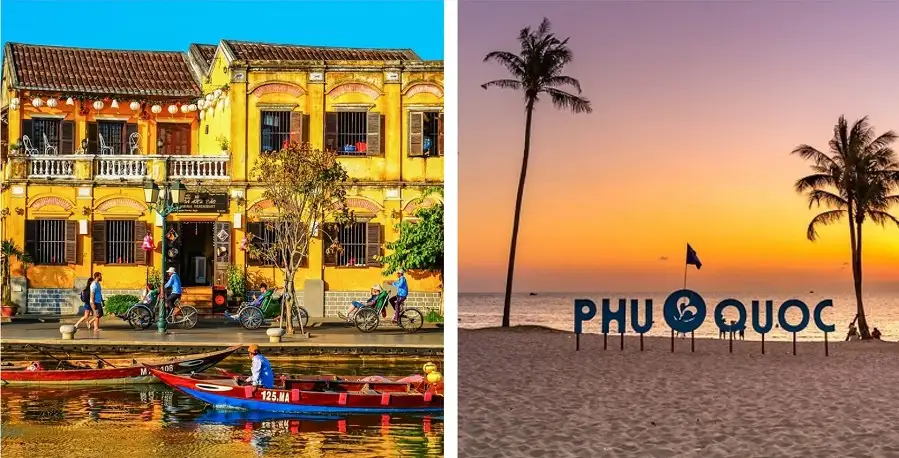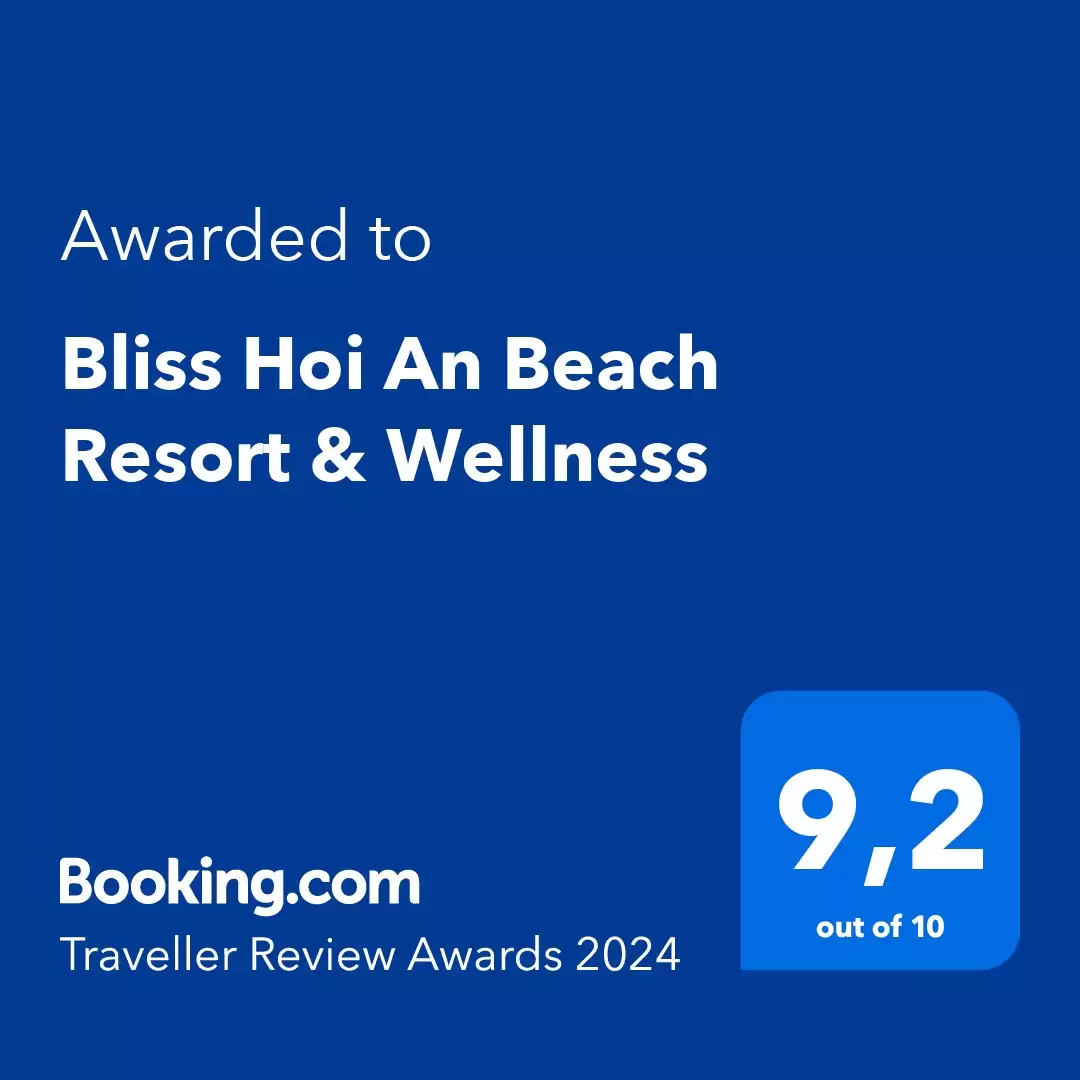Hoi An or Phu Quoc – Which destination is right for you?
Choosing Hoi An or Phu Quoc can be a delightful challenge for travelers exploring Vietnam. Both are top-rated destinations that offer very different vibes. So, which one suits your travel style better? In this article, we’ll break down the key differences in location, climate, scenery, local culture, activities, food, and more to help you make the best decision for your next adventure.
Key factors to consider when choosing between Hoi An and Phu Quoc
Hoi An or Phu Quoc? This is a difficult question, especially for those who travel to Vietnam for the first time. Each place has its own appeal, shaped by geography, weather, lifestyle, and local culture. In this section, we’ll look at the essential factors that help travelers make the right choice, from how easy it is to get there, to what you can expect in terms of weather, scenery, activities, and food. Understanding these core differences will make your decision a lot easier and more enjoyable.
Geographical location and transportation
When choosing a travel destination, one of the first factors to consider is its location and how easy it is to get there. Both Hoi An and Phu Quoc are famous tourist spots, but they differ significantly in geography and accessibility.

Hoi An is located in Quang Nam Province, in Central Vietnam. Although it doesn’t have its own airport, it’s just about 30 km from Da Nang International Airport. After landing in Da Nang, travelers can easily reach Hoi An by taxi, bus, or shuttle in roughly 45 minutes. Thanks to its central location, Hoi An is a great stop on a multi-city itinerary, especially for those planning to visit Da Nang, Hue, and other nearby cultural sites.
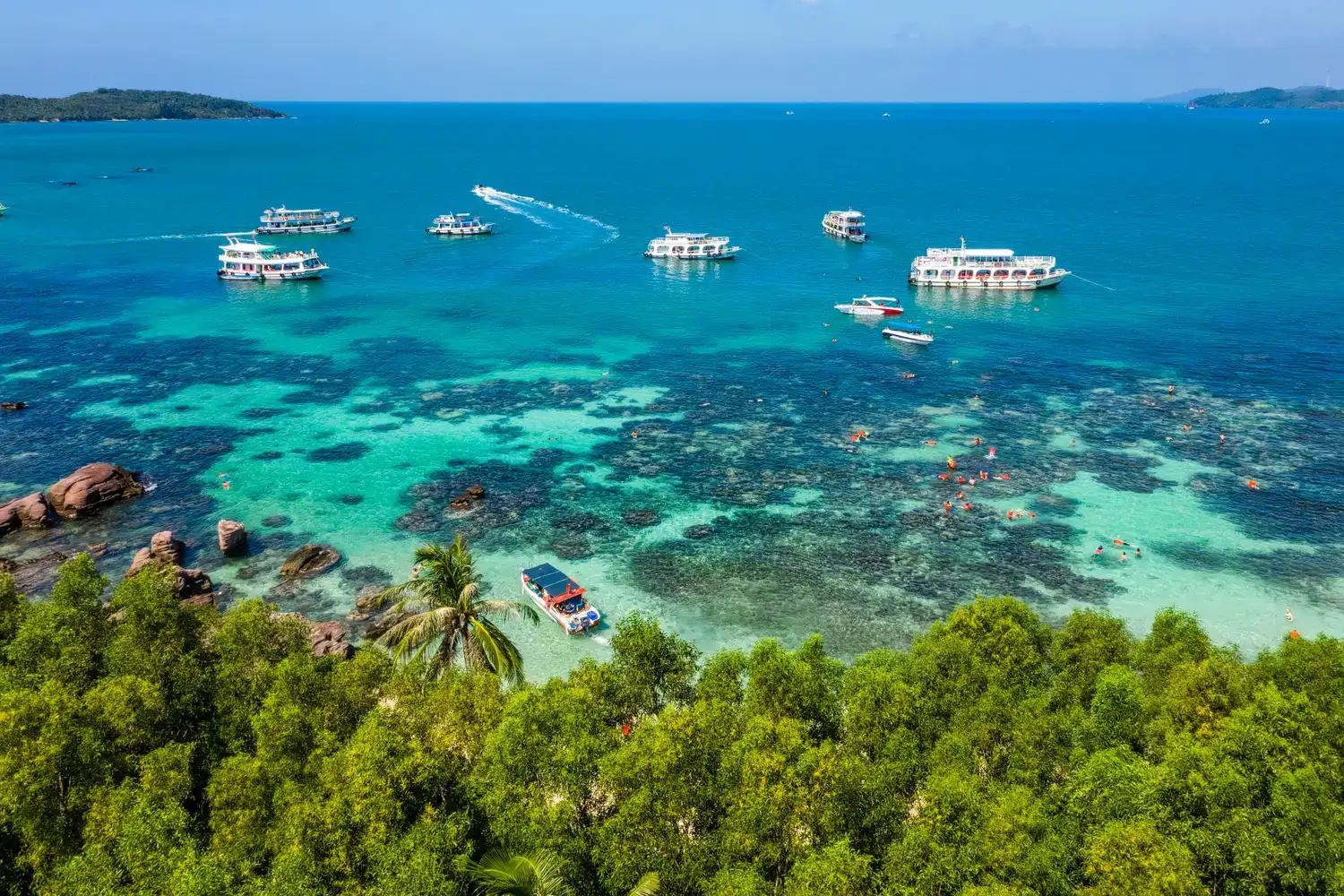
Phu Quoc, on the other hand, is a large island off the coast of Kien Giang Province in Southern Vietnam. The island is home to Phu Quoc International Airport, allowing direct flights from major cities like Hanoi, Ho Chi Minh City, Da Nang, and Can Tho. Once on the island, getting around is easy with taxis, electric cars, motorbikes, and shuttle services offered by resorts.
Weather and best time to visit
Every destination has its own “golden season”, the time of year when weather conditions align perfectly with travel experiences. To decide the best destination, Hoi An or Phu Quoc, it’s essential to understand the climate patterns of each place so you can plan your trip at the most ideal time and avoid weather-related inconveniences.
Hoi An has a tropical monsoon climate with two distinct seasons: the dry season and the rainy season. The dry season runs from February to August, offering warm, sunny weather that’s perfect for exploring the ancient town, visiting cultural landmarks, and joining outdoor activities. The most recommended time to visit Hoi An is between March and May, when the skies are clear, the sun is mild, and the temperatures are comfortable. In contrast, the rainy season from September to January can bring heavy downpours, sometimes leading to flooding in the old town area and limiting sightseeing options.
Phu Quoc, on the other hand, has the characteristics of a tropical island climate, also divided into a dry season (November to April) and a rainy season (May to October). During the dry months, the island enjoys pleasant temperatures, soft sunshine, and calm seas – perfect for swimming, snorkeling, or taking boat tours to nearby islets. From December to March, Phu Quoc enters its peak tourist season, attracting visitors seeking sunny beach escapes. While the rainy season here is generally milder than in other places, unexpected showers can still occur, which might disrupt outdoor plans.
People and lifestyle
In Hoi An, the community is known for its warm hospitality and strong cultural roots. Many residents still follow traditional ways of life, especially in the old town where generations have lived and worked. The pace here is slow and relaxed, with locals often seen cycling through narrow streets or sitting by the river chatting.
Craftsmanship plays a big role in daily life, with many families running small workshops producing lanterns, textiles, or tailor-made clothing. Festivals and religious ceremonies remain important, keeping traditions alive and vibrant. Visitors will appreciate the genuine friendliness and openness of the people, making every interaction feel personal and meaningful.
In contrast, Phu Quoc has a more diverse and dynamic lifestyle influenced by its island setting and growing tourism industry. The local people, mainly fishermen and their families, have a deep connection to the sea, which shapes their work and diet. Life here blends traditional fishing village customs with modern resort developments.
You’ll find lively markets selling fresh seafood alongside new cafés and bars catering to travelers. The island community is welcoming and easy-going, often ready to share stories about their fishing heritage or island life. While the pace can be more energetic in tourist areas, many parts of Phu Quoc remain peaceful and close to nature.
Accommodation
In Hoi An, travelers can find everything from budget guesthouses to charming boutique hotels and luxurious beach resorts. If you’re looking for a peaceful, upscale retreat away from the tourist crowds, Bliss Hoi An Beach Resort & Wellness is a great option. Located by the sea, it offers a quiet atmosphere with beautiful views and easy access to both the beach and the old town by shuttle or taxi. For those who prefer staying closer to the town center, there are plenty of homestays and small hotels nestled within the ancient streets, offering a cozy and cultural experience.

In Phu Quoc, accommodations are more beach-oriented, with a variety of beachfront resorts, modern hotels, and eco-lodges spread across the island. Most visitors choose to stay near Long Beach or the southern areas where tourism is more developed. Whether you’re looking for a luxurious resort with ocean views, a mid-range hotel with pool access, or a simple bungalow by the beach, Phu Quoc has options to match your needs. For travelers who enjoy privacy and natural surroundings, several eco-friendly stays are also available in less crowded parts of the island.
Landscapes
Hoi An is famous for its blend of rivers, rice paddies, and historic townscape. The town sits gently along the Thu Bon River, creating picturesque riverside views that change with the seasons. During the dry season, the surrounding rice fields glow bright green, offering peaceful countryside scenes just a short bike ride from the old town. The architecture of ancient houses and narrow lanes adds a warm, nostalgic feeling to the landscape, especially when lanterns light up the streets at dusk.
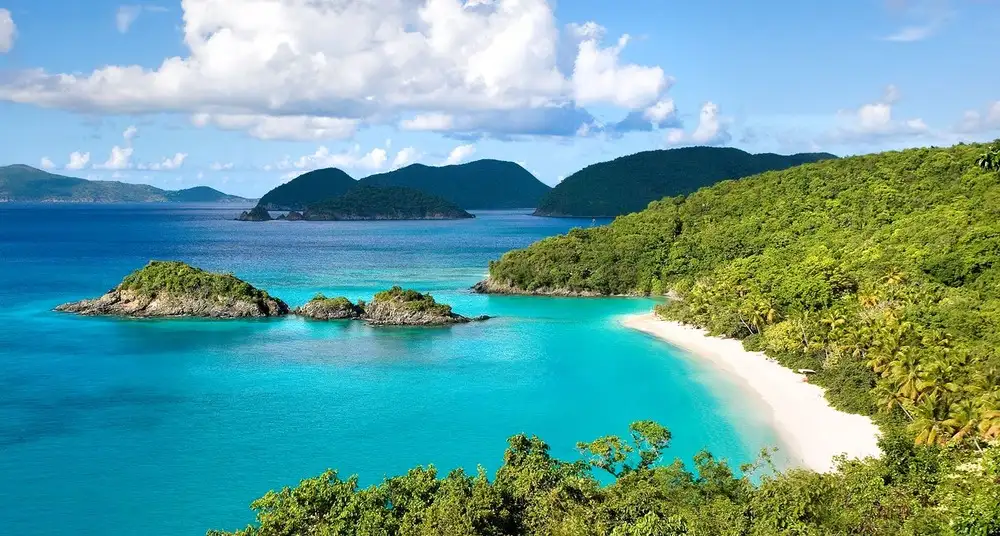
In contrast, Phu Quoc is a tropical island paradise known for its stunning coastline and lush interior. The island boasts long stretches of sandy beaches with crystal-clear turquoise waters. Palm trees sway gently in the sea breeze, creating a classic island vibe that feels like a perfect escape from busy city life. Inland, dense tropical forests and rolling hills offer hiking opportunities and natural beauty. The island’s coral reefs also contribute to the vibrant underwater landscape, making it a hotspot for snorkeling and diving.
Activities and entertainment
Both Hoi An and Phu Quoc offer a wide range of activities to suit different types of travelers, from cultural exploration to beach relaxation and vibrant nightlife.
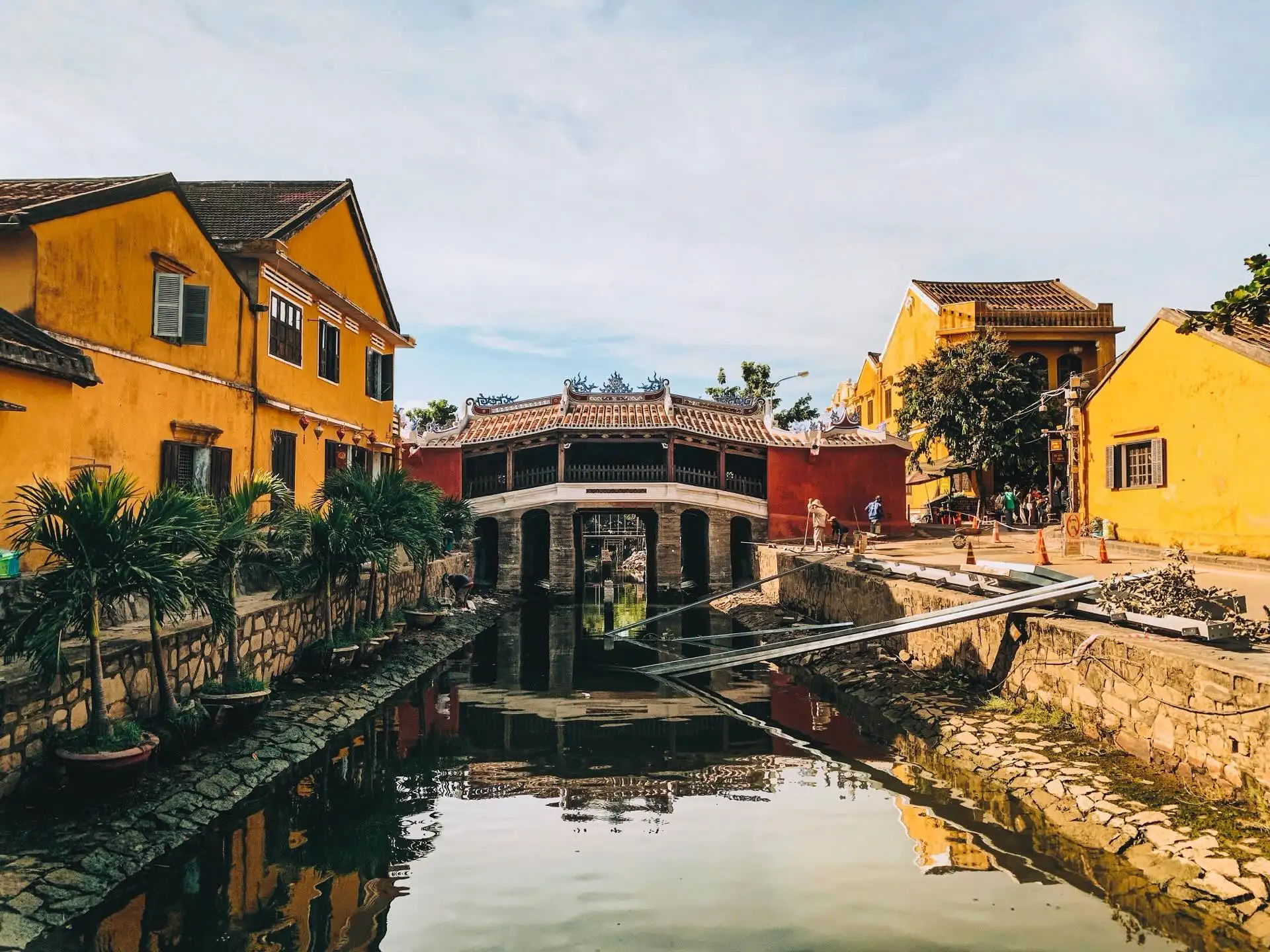
In Hoi An, the focus is on cultural and leisurely experiences. During the day, visitors can explore the ancient town on foot or by bicycle, visiting historic sites such as the Japanese Covered Bridge, ancient houses, and traditional markets.
Hands-on activities like lantern-making workshops and Vietnamese cooking classes are popular for those wanting to dive deeper into local culture. For shopping enthusiasts, Hoi An’s tailor shops are famous for custom-made clothing, and its artisan boutiques offer unique souvenirs and handmade crafts.
When night falls, Hoi An transforms into a magical place. The streets are illuminated by colorful lanterns, creating a romantic atmosphere perfect for evening river cruises or leisurely walks. Night markets open along the riverbanks, selling local snacks, handicrafts, and souvenirs. Although nightlife here is relatively low-key, you can find cozy cafes, bars, and live music venues for a relaxed evening.
Phu Quoc offers a more dynamic and diverse entertainment scene, especially for beach lovers and adventure seekers. Daytime activities include swimming, snorkeling, diving among coral reefs, and boat tours to nearby islands. For those who prefer land-based fun, Phu Quoc has hiking trails in its national park, pepper farms, and fish sauce factories to explore.

At night, Phu Quoc’s atmosphere livens up with beach bars, seafood restaurants, and night markets where visitors can sample fresh local dishes and shop for souvenirs. The Long Beach area is particularly known for its vibrant nightlife, with music venues, cocktail bars, and beach parties. For a more relaxed vibe, luxury resorts and spa centers offer wellness treatments and quiet lounges.
Signature cuisine
Food is an essential part of the travel experience whether you choose to visit Hoi An or Phu Quoc, each offering distinct flavors that reflect their local culture and natural resources.
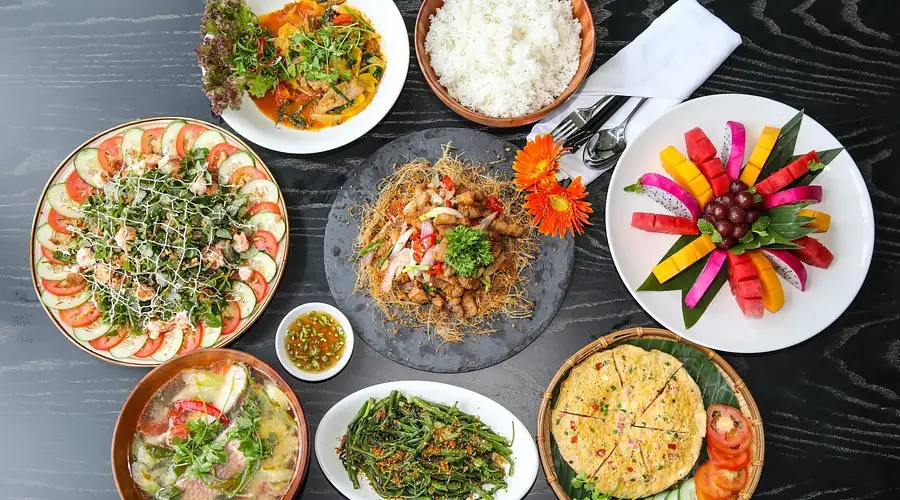
Hoi An is famous across Vietnam and internationally for its unique Central Vietnamese cuisine, which is delicate, aromatic, and rich in herbs and spices. One cannot miss trying the iconic Cao Lau – thick noodles served with tender pork slices, fresh greens, and crispy croutons. This is a dish that can only be authentically tasted in Hoi An due to its special water and cooking method.
Other must-try dishes include White Rose dumplings (steamed shrimp dumplings shaped like flowers), Banh Mi Phuong (the famous local baguette sandwich), and Mi Quang. Street food stalls, family-run eateries, and riverside cafés create an inviting culinary scene perfect for food lovers eager to explore local tastes.
In contrast, Phu Quoc’s cuisine is strongly influenced by its island geography, featuring fresh seafood as the highlight. Grilled fish, squid, lobster, and sea urchins are served freshly caught in many local restaurants and night markets. Phu Quoc is also renowned for its fish sauce (nuoc mam) – a world-famous product made here with a distinctive flavor that visitors often take home as a souvenir.

Beyond seafood, tropical fruits such as rambutan, durian, and mango are abundant and deliciously sweet on the island. Street markets and beachfront eateries offer a relaxed atmosphere to enjoy fresh dishes while soaking in ocean views.
Read more: Hoi An or Ho Chi Minh – Which city matches your travel soul?
Which should you choose: Hoi An or Phu Quoc?
If you prefer a travel style focused on culture, history, and peaceful exploration, Hoi An is the better choice for you. It’s ideal if you like wandering through ancient streets, visiting traditional markets, enjoying local crafts, and tasting authentic Vietnamese dishes in a calm atmosphere. Hoi An suits travelers who want to slow down, learn about local heritage, and experience a small-town charm.
If your idea of a perfect trip is relaxing on the beach, swimming in clear waters, trying fresh seafood, and having lively nightlife options, then Phu Quoc fits your style best. It’s great for those who want a more active vacation with water activities like snorkeling, island tours, or simply soaking up the sun. Phu Quoc is perfect for travelers looking for a mix of nature, relaxation, and entertainment by the sea.
In summary:
- Choose Hoi An if you enjoy cultural sightseeing, peaceful environments, and rich history.
- Choose Phu Quoc if you want beach time, water sports, and a vibrant island vibe.
Whichever you pick, Vietnam’s magic will make your journey unforgettable.
Read more: Hoi An or Hue: Which one should you go to and why?
Choosing between Hoi An or Phu Quoc depends entirely on the kind of travel experience you’re looking for. Both offer their own unique charm and unforgettable experiences. So when it comes to deciding Hoi An or Phu Quoc, think about your travel style, interests, and the memories you want to create, and let that guide your perfect getaway.

